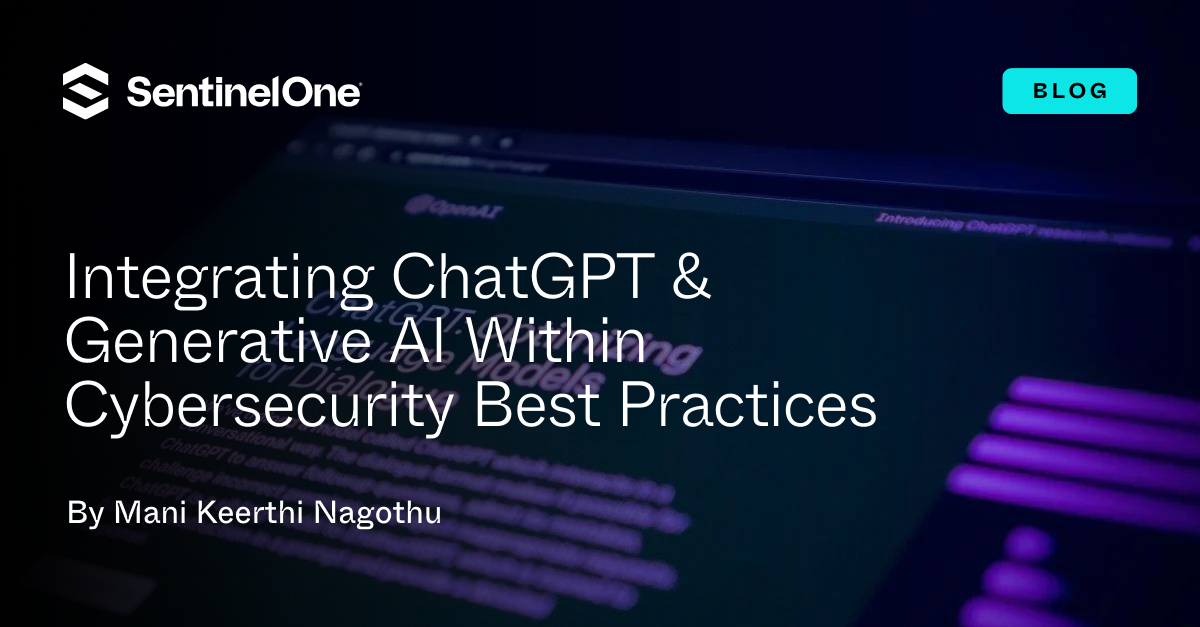- The CyberLens Newsletter
- Posts
- A Silent Invasion of Over 8500 SMBs Through SEO Poisoning Disguised as AI Tools
A Silent Invasion of Over 8500 SMBs Through SEO Poisoning Disguised as AI Tools
Cyber-criminals Exploit AI Hype and Search Rankings to Infect Small Businesses with Stealth Malware
Interesting Tech Fact:
A little-known yet alarming fact about the SEO poisoning campaign that silently infiltrated over 8,500 SMBs is its use of polyglot files—malicious payloads that are crafted to be interpreted as different file types by different systems. In this particular campaign, attackers embedded malware into installers that doubled as valid image or PDF files, allowing them to bypass both web filters and antivirus engines that scan for conventional binaries. This advanced evasion tactic enabled the malware to masquerade as harmless media assets while still executing malicious code once downloaded—an exceptionally rare and technically sophisticated method rarely seen outside of nation-state operations.
Introduction
A new cyber-crime campaign has quietly but effectively breached the defenses of more than 8,500 small-to-medium businesses (SMBs) across the globe. The method? Not zero-day exploits or phishing emails—rather, it’s an old trick with a modern twist: SEO poisoning. Disguised under the growing popularity of artificial intelligence tools, malicious actors have planted booby-trapped links across search engines, luring unsuspecting users with promises of cutting-edge AI utilities and delivering instead a payload of malware. It is extremely important that we understand how it works, who’s behind it, the malware strains involved, and how SMBs can protect themselves from this increasingly dangerous blend of digital manipulation and malware engineering.

The Anatomy of the Campaign
The SEO poisoning campaign, first detected by threat researchers in early June 2025, is leveraging search engine optimization techniques to manipulate search results, primarily Google and Bing, with seemingly legitimate websites offering AI-powered tools. These tools range from "AI copywriters," "AI art generators," "AI resume builders," and even free versions of premium services like ChatGPT, Midjourney, or Jasper AI
But instead of accessing these tools, users are redirected to malware-laced downloads disguised as installers or browser extensions. Once executed, these files deploy a variety of information stealers, remote access trojans (RATs), and in some cases, ransomware components.
Researchers estimate more than 8,500 SMB endpoints have been compromised, with infections traced to at least 40 countries. The campaign is still active, with new domains and malicious keywords appearing every week.

How SEO Poisoning Works in 2025
SEO poisoning is not new, but its application in this case is more automated, data-driven, and AI-enhanced than ever before. Cyber-criminals are now using generative AI to rapidly produce content that passes spam filters, earns backlinks, and ranks well for trending AI-related keywords.
Here's how the operation unfolds:
Keyword Targeting: Malicious actors scrape top-trending queries related to "free AI tools," "AI content generator," and "best AI apps 2025."
Content Generation: Using AI-powered content writers, they populate entire websites with fake product pages and AI tool reviews that look authentic to both users and search engines.
Domain Spoofing and Redirection: Some sites imitate real brands using typosquatting (e.g., “chatgptt.ai”) while others redirect from legitimate-looking SEO-friendly URLs to malware-hosting servers.
Malware Delivery: Once on the site, users are tricked into downloading fake installers, which are digitally signed or obfuscated using packers and loaders to evade detection.
Post-Infection Activity: Depending on the payload, attackers either exfiltrate sensitive data (passwords, SSH keys, financial records) or maintain persistent access for future ransomware deployment.
Stop Asking AI Questions, and Start Building Personal AI Software.
Transform your AI skills in just 5 days through this free email course. Whatever your starting point, by Day 5 you'll be building working software without writing code.
Each day delivers actionable techniques and real-world examples straight to your inbox. No technical skills required, just knowledge you can apply immediately.
Malware Families Involved
The campaign appears to be multi-tiered and modular, indicating the involvement of sophisticated threat actors, possibly working in cooperation or as part of a larger Malware-as-a-Service (MaaS) syndicate. Several known malware families have been linked to the campaign:
RedLine Stealer – Harvests browser data, cryptocurrency wallets, and credentials.
Amadey Loader – Acts as a dropper for more dangerous payloads including ransomwarre.
AsyncRAT and njRAT – Gives remote access to infected systems.
Vidar – Known for targeting SMBs and exfiltrating sensitive business data.
LummaC2 – A newer strain observed in payloads embedded within AI tool installers, equipped with evasion capabilities and data exfiltration routines.

Why SMBs Are Prime Targets
Small and mid-sized businesses are often caught in the crossfire of cybercrime because they typically lack the advanced threat detection infrastructure of larger enterprises, yet possess valuable data and business continuity needs.
In this campaign, attackers specifically tailored their content and malware packaging for SMBs. For example:
Promoting AI invoice generators and chatbots for customer service.
Impersonating free “Lite” versions of expensive productivity AI tools to attract cash-strapped startups.
Targeting local businesses through geo-optimized search results.
The result: A high infection rate with minimal resistance.
Attribution and Threat Actor Profile
While definitive attribution remains elusive, forensic clues point toward Eastern European threat groups known for prior SEO-based campaigns. Notably, infrastructure overlaps have been observed with past attacks attributed to FIN7 and Void Balaur, groups with a history of blending cyber-crime with espionage-level sophistication.
Researchers have also discovered command-and-control (C2) servers communicating in Russian and Ukrainian-language forum posts selling access to the infected endpoints, suggesting a thriving secondary access market.

Why This Campaign Is Newsworthy
The reason for this campaign is considered as being newsworthy is not just because it is another malware incident—it’s a reflection of how cyber-crime is evolving in tandem with public tech trends. As the AI boom dominates headlines and search queries, threat actors are weaponizing hype cycles to distribute malware at scale with frightening efficiency.
Moreover, the use of automated SEO manipulation, AI-generated content, and decentralized payload delivery mechanisms represents a new generation of cyberattack—one that blends psychological manipulation, AI, and algorithmic control to quietly spread across the digital ecosystem.
Defensive Recommendations for SMBs
Educate Your Workforce: Awareness is your first line of defense. Train employees to verify software sources and avoid downloading tools from unverified websites.
Restrict Admin Privileges: Most of these malware variants rely on elevated privileges for installation. Least-privilege policies can minimize impact.
Implement Real-Time Endpoint Detection and Response (EDR): EDR tools can catch suspicious behavior even if malware evades antivirus.
Use DNS Filtering and Web Gateways: Proactively block domains associated with known malicious AI tool clones.
Patch and Update Software Regularly: Although SEO poisoning doesn’t exploit vulnerabilities per se, once inside, attackers will exploit unpatched systems to gain persistence.
Monitor Logs and Outbound Traffic: Sudden data exfiltration or anomalous connection attempts can be red flags of compromise.
Whitelist Approved AI Tools and Software Repositories: Provide staff with vetted, secure alternatives to avoid shadow IT behavior.

Broader Implications: The Dark Side of AI Hype
The campaign underscored an unsettling reality: AI is now both bait and bullet. Just as AI transforms legitimate business operations, it’s also empowering adversaries with the tools to scale their attacks in ways previously unimaginable.
However, the real danger isn’t just in the malware—it’s in the method. Search engines—the gateways to our digital world—are being gamed to deliver poison in the form of appealing AI productivity solutions. Unless security awareness keeps pace with innovation, campaigns like this will continue to succeed.

Conclusion
The silent success of this SEO poisoning campaign reveals a hard truth: Modern cyberattacks don’t need to break down your firewall—they just need to be on the first page of Google. With over 8,500 SMBs already compromised and the campaign still evolving, the time to act is now.
Small businesses must adopt proactive cybersecurity practices, understand the risks tied to emerging technologies, and treat trending tools with the same caution they’d apply to unknown executables. The AI gold rush is here—but buried beneath the promise of productivity lies a deep pit of digital deception.








